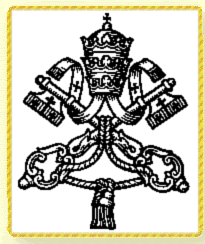ROME (ANSA) - A new exhibit has opened in Rome charting the charismatic and powerful cardinals that have helped shape the history of the Catholic Church.
The event features over 70 portraits of the best-known princes of the church, spanning 500 years from the mid-16th century through to the 1990s.
"The show leads us through half a millennium of art, exploring the public and private affairs of many important figures who shaped the history of our city," said Rome Culture Councillor Gianni Borgna. "At the same time, it traces the development of art over the centuries, showing the evolution in tastes and styles.
"Popes are important but cardinals are more interesting from a history of art point of view, because they produce more lively portraits. There are more restrictions on paintings of popes," he explained.
The exhibit encompasses a variety of mediums, including paintings, sculptures and photographs.
One of the event's two curators, Maria Elisa Tittoni, explained that the exhibit sought to draw out the dual significance of portraiture.
"On the one hand, they are important with regards to the history of art and on the other, with regards to the history of the city," she said.
"There are basically three types of portrait, all of which are amply covered here: standing figures; sitting figures at a three-quarter angle and half figures".
The most significant portraits include a full-length painting of Cardinal Giovan Battista Montini (1897-1978) who would later become Pope Paul VI; a portrait of Alessandro Farnese (1468-1549), later Pope Paul III, attributed to Raphael; and a bronze sculpture entitled 'Cardinal Sitting' by one of Italy's best-known 20th-century sculptors, Giacomo Manzu.
There is also a selection from a series of photographs of the Roman Curia, taken by Marco Delogu between 1998 and 1999.He photographed 24 of the Vatican "government's" 27 members as part of the project, including the German cardinal Joseph Ratzinger, who was later elected Pope Benedict XVI.
"Ratzinger was the one who gave me most time, almost a whole hour, and he was the only one I was able to shoot in close-up," recalled the photographer.
One of the most striking elements of the exhibition is the array of tones and textures in the scarlet silk cassocks worn by the cardinals.
"Walking along the corridors of Palazzo Braschi, the predominant colour in the paintings is red," said Borgna. "However, as these are works from different eras, the approaches and techniques change, testifying the development in art itself".
Palazzo Braschi was deliberately chosen by the exhibit's curators owing to its history: now the Museum of Rome, it was built at the end of the 1700s by Pope Pius VI for his nephew Luigi Braschi Onesti.
'La Porpora Romana Rittrastica Cardinalizia dal Rinascimento al Novecento' runs until February 22.
Friday, December 01, 2006
Subscribe to:
Post Comments (Atom)










No comments:
Post a Comment